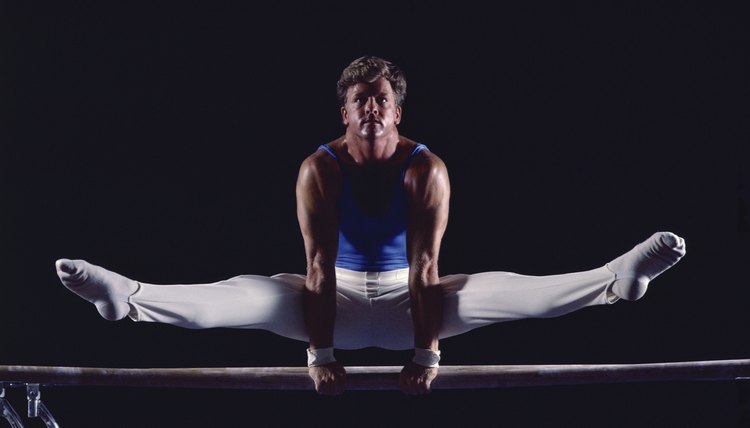History of Gymnastics Equipment

Invented in Ancient Greece, gymnastics originally included dozens of activities that focused on strengthening both the body and the mind. Modern artistic gymnastics emerged in the 1800s and became a men’s Olympic sport in 1896. Individual women’s events were added in 1952, but gymnastics did not become a serious spectator sport until Nadia Comaneci earned the first perfect 10 in 1976. Today, the sport is evolving rapidly, necessitating changes in equipment for safety and performance.
Vaulting Table
The most dramatic change in gymnastics equipment in modern times is the vaulting table. Until 2001, the vaulting horse had changed little in more than 200 years. The same size and shape as the men’s pommel horse, the vaulting horse proved dangerous as gymnasts performed ever more difficult vaults. A series of accidents in the 1980s and 1990s led the international gymnastics community to embrace the new vaulting table, which debuted at the 2001 World Championships. By 2003, the vaulting table was standard in every level of competitive gymnastics for both men and women.
Rings
Invented in the early 1800s, men’s rings were part of the 1896 and 1904 Olympics, but then disappeared from international competition until 1924. Originally known as the flying rings because they swung freely as gymnasts performed tricks, the rings became known as the still rings in the 1960s. Today, the goal is to keep the rings as still as possible. Over the years, they were variously made of iron, wood and rubber, and covered with various leathers or fabrics. Modern rings are made of laminated wood. They are mounted 50 centimeters apart on a system of cables and straps.
Bars
Bars are used by both men and women in competitive gymnastics. Men compete on the parallel bars and the horizontal bar, while women compete on the uneven bars. Invented in Germany in the 1800s, the parallel bars were originally fixed wooden rails set in the ground. Introduced at the 1934 World Championships, but not considered an entirely separate apparatus until 1954, women’s uneven bars evolved from men’s parallel bars. Today, all three bar events use flexible, adjustable rails that absorb shock and provide bounce for the gymnasts.
Pommel Horse
Invented by the Romans as a way to practice mounting and dismounting horses, the pommel horse was part of the ancient Olympic Games. Originally a simple wooden block, today’s pommel horse consists of a metal frame covered in foam and leather. All edges of the modern pommel horse are rounded, giving the horse a somewhat oval appearance. Plastic handles on top allow the gymnast to perform a series of twisting, highly technical maneuvers.
Balance Beam
Although balancing exercises involving tree trunks were described at least as early as the 1800s, the balance beam did not become a part of competitive gymnastics until the 1934 World Championships. Individual medals on beam were introduced in 1952. Then, the beam was merely a long, narrow block of wood, and beam routines focused more on dance than tumbling. As gymnasts such as Olga Korbut and Nadia Comaneci introduced powerful tumbling passes in the 1970s, beams evolved for increased safety. Today, the beam is padded with rounded, cushioning material to absorb shock.
References
Writer Bio
Lisa Fritscher is a freelance writer specializing in disabled adventure travel. She spent 15 years working for Central Florida theme parks and frequently travels with her disabled father. Fritscher's work can be found in both print and online mediums, including VisualTravelTours.com. She holds a Bachelor of Arts in psychology from the University of South Florida.
